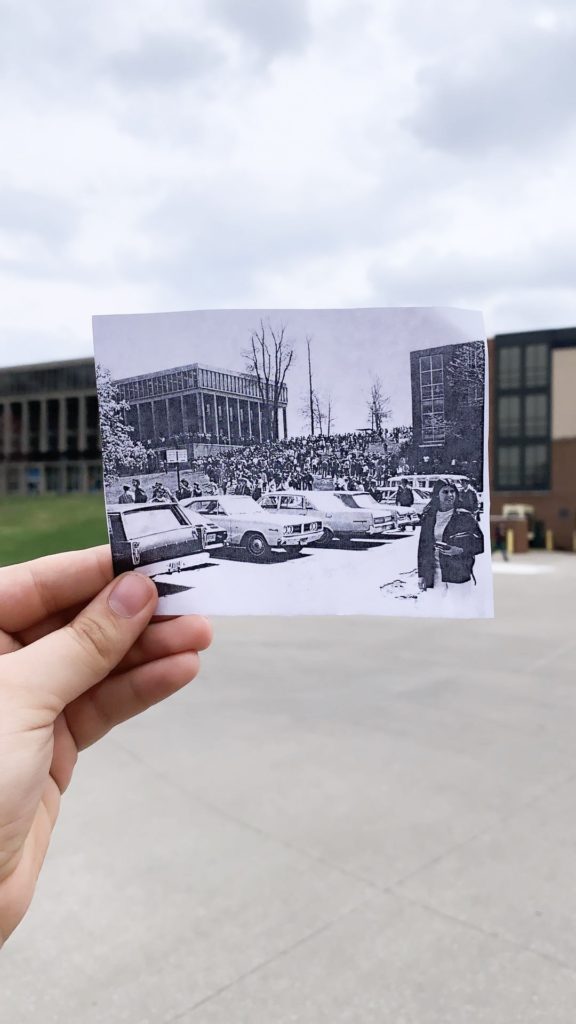Standing here, it’s impossible not to compare today’s activism to yesterday’s.
by Ashley Torres

Growing up in upstate New York, I didn’t have close ties to Kent or the shootings of May 4th – It wasn’t until an English substitute teacher inquired about college plans that I learned nine students were injured, and another four died. I wouldn’t understand the tragedy until I was standing on campus, where everything happened. Something is unsettling about seeing students walk across the Commons where the National Guard opened fire on unarmed students as if nothing happened. Students and faculty can park right next to memorials where victims laid bleeding out to death and go about their days. This picture shows people out by Taylor Hall, collectively demonstrating amongst the chaos, against a government that wasn’t listening. As I spoke to my generation of students, almost all said they believed this generation protests but differently–instead of taking protests to the streets, people use social media to voice their opinions. Movements like #MeToo and #MuteRKelly grew universally with people around the world because social media has the power to reach millions. But I wonder if this generation gravitates to social media more because it’s accessed from the comfort and safety of their own homes, people no longer have to expose themselves to the risk of getting shot for expressing their beliefs.
After those 13 students were shot, protests erupted across college campuses all over the country. It helped change the perceptions people had of who anti-war protestors were, and that they weren’t hippies or drug addicts. There are many perceptions people carry about this generation and its lack of direction that I wonder if it’s best to unite in the streets in solidarity once again. Every time I walk up Blanket Hill or park next to a memorial, I silently remember the people who were there before me and have an urge to do more.